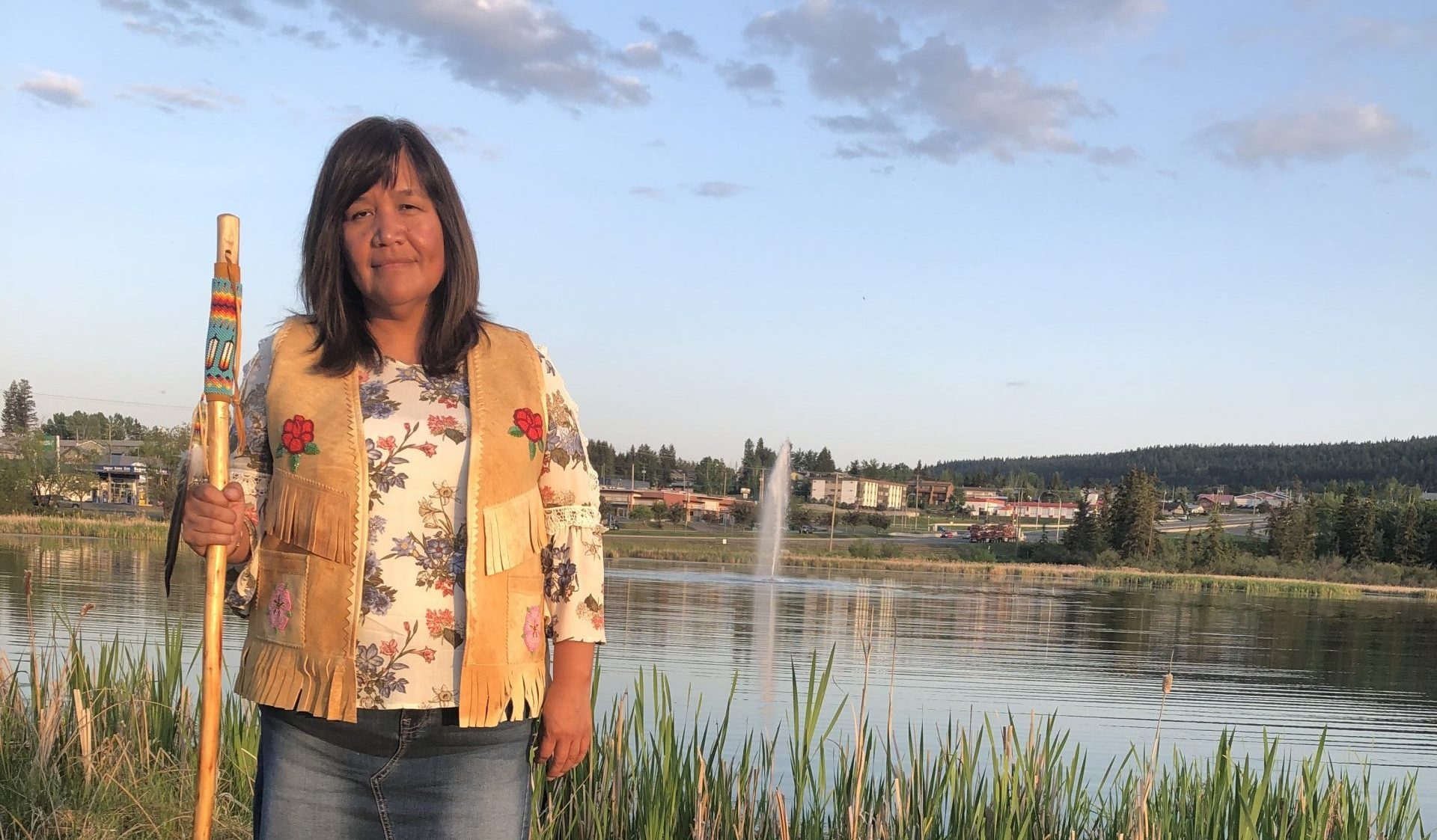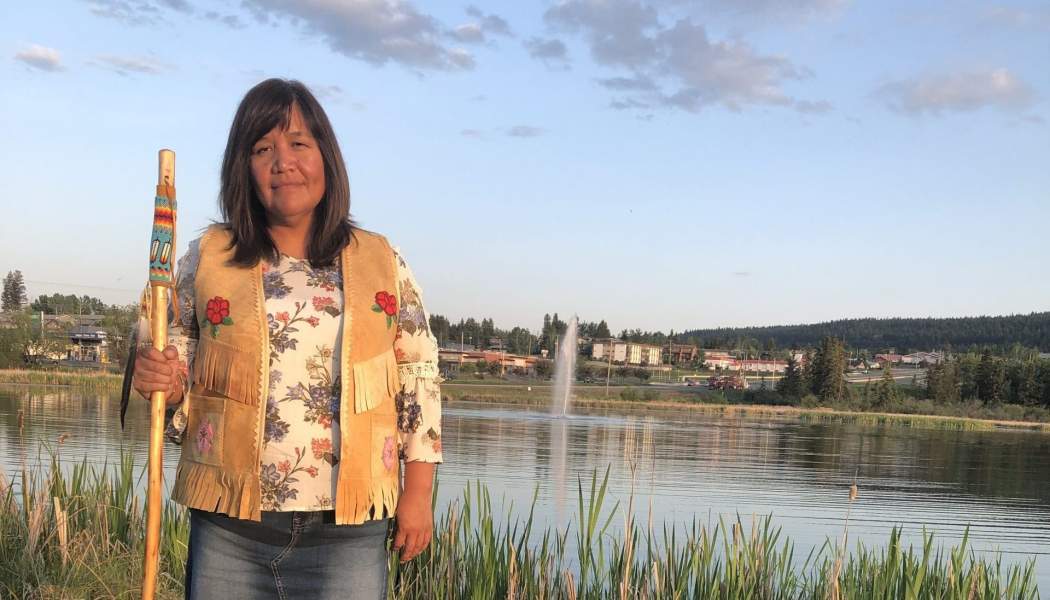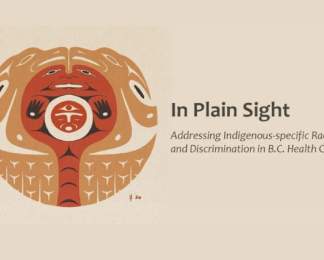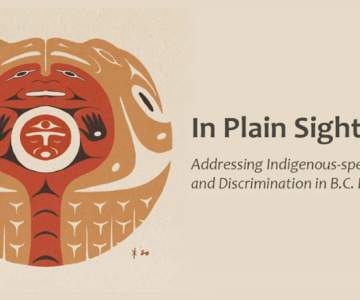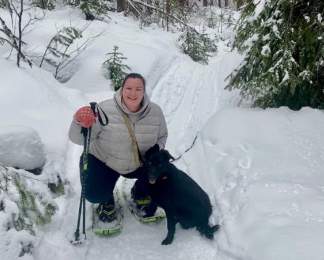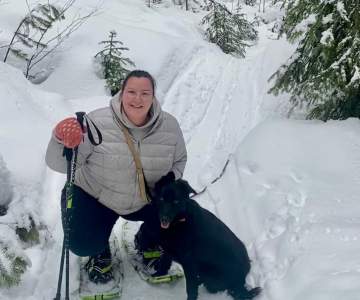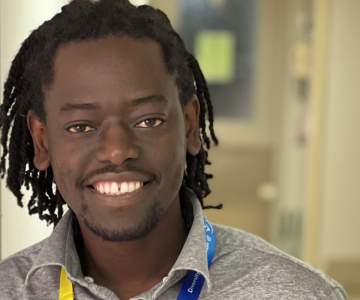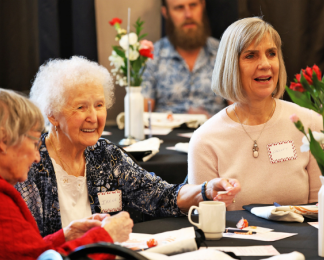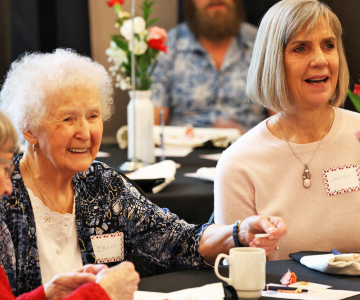For Helen Henderson, life is all about connections.
As kukpi7 (chief) of the Canim Lake Band near 100 Mile House, she searches out connection to the land, to her band members and to her past.
Earlier this year at Royal Inland Hospital (RIH) in Kamloops, several connections came together in one emotional ceremony for Helen, one of five Secwepemc kukpi7s who attended a sacred smudging ceremony at the construction site for the RIH Patient Care Tower.
It was her sister who was top-of-mind.
Helen and her sister Catherine were both born at RIH. Their mother travelled from the 100 Mile House area to give birth by caesarean section. After struggling for years with health and substance use issues, her sister passed away at RIH in 2011 due to complications from pneumonia.
“It’s bittersweet every time I go to Tk’emlups (Kamloops) because I have memories of my sister,” says Helen. “As hard as losing her was, it was almost like we were coming full circle in her journey. She was born on the fourth floor at RIH and she passed away on the sixth floor. I take comfort in the fact that that’s where her journey started and that’s where it ended. So as tough as it is to be in Tk’emlups, it also connects me with her.”
The smudging was performed in a private ceremony on a late afternoon day in October. A Secwepemc elder and knowledge-keeper performed the smudge while two drummers followed along, the sounds of a Secwepemc honour song echoing throughout the construction site.
Helen and her fellow chiefs bowed their heads in silent prayer. For her, the connection she feels is at the heart of the Secwepemc people.
“When I talk about connection and being connected to my sister, I’m also talking about the connection to our ancestors,” she says. “It’s only through that connection that we are able to carry on and build strength in relationships. I know our mindset may be on a different level, but at the root of our mindset is the health and well-being and healing of all people. With the Secwepemc, that’s who we are: To be able to generate healing for everyone, not just for our own people. That’s why it’s so special to be able to bless a new build with a ceremony like this.”
Smudging is a traditional ceremony that involves the burning of sacred herbs as part of a ritual, for cleansing or health purposes. Secwepemc traditional wellness coordinator David Archie performed at the RIH smudging as a drummer and singer.
“The smudge carries our prayers, grief and loss and hands it over to the Creator and our ancestors to take care of in a good way,” explains David. “This ceremony was held to honour the ancestors of the Secwepemc people and was also a blessing for the construction crews, medical staff and patients so they will be protected and watched over while on site.”
As the drumming, singing and smudging came to an end, the chiefs, along with those in attendance, said a prayer and left behind a traditional offering of tobacco, known as a sacred medicine in Aboriginal culture.

Helen says she was honoured to be invited to the smudging and be received by Tk’emlups Kukpi7 Roseanne Casimr on the ancestral lands of the Tk’emlups te Secwepemc. Kukpi7s were also in attendance from Xatsull, Soda Creek First Nation; T’exelc, Williams Lake Band; and the Stswecem’ Xgat’tem First Nation, Canoe Creek.
For Helen, being able to connect the construction project to the Secwepemc culture was a special moment.
“I know that being able to practise our culture through the smudging can only bring health,” she says. “It can only bring good things. When you start a new build, or a new relationship, it’s based on ceremony and it’s based on our culture and because of that it provides support to the building and to the structure. It also pays respect to the ancestors we pay homage to on a daily basis.
“It is only through building our relationships with Interior Health and with other organizations that we are even able to start talking about reconciliation and what that would even look like. Doing things like this is a really good step in the right direction.”
